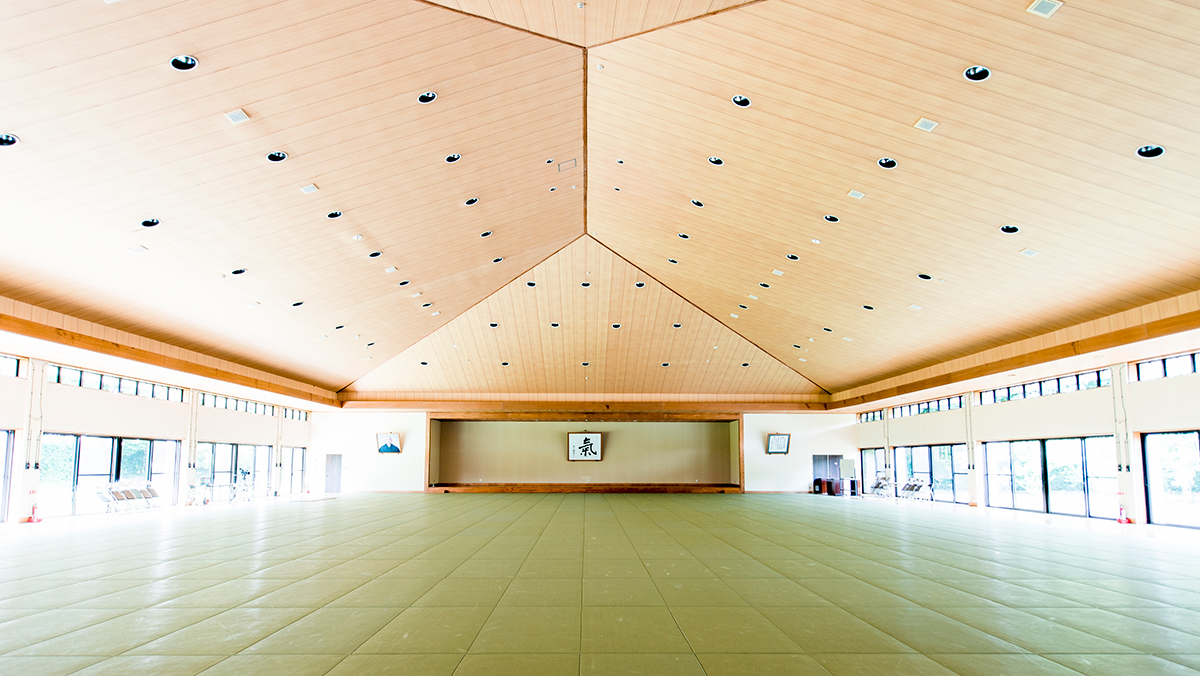A Short Instruction:
The purpose of this article is to apply the Ki principle (mind moves the body) which is the fundamental of Shin Shin Toitsu Aikido to our daily life.
It is not enough just to read, but it is important to positively practice the subject given each month. Learning through practice will be your lifelong asset.
Vocal Expression
I recently went to the theatre and watched a show called “Rokudenashi Takuboku (good-for-nothing Takuboku),” played by leading stage actor Mr. Tatsuya Fujiwara. Mr. Fujiwara’s voice was reaching every corner of the hall very clearly. You can only be impressed to see how he was able to project his voice.
Under some circumstances, I do not use a microphone, even when giving a lecture for 100 people or more. Sometimes, as in a seminar or workshop, my lectures may last 8 hours or more. Hence, some students ask me why this doesn’t affect my voice.
I don’t have any knowledge or professional experience in voice training because I am not a professional singer, actor or announcer. However, I have great personal experience in utilizing Ki with my voice. Here are two important methods I would like to introduce:
“Breathing”
When you extend your voice, you always are exhaling. Therefore, the nature of your exhaling will change the nature of the voice.
If you practice Ki breathing, weak breathing will be changed to the calm breathing of keeping one point in the lower abdomen. If you try to project your voice with weak breathing it won’t reach your audience. Whereas the voice emitted by calm breathing easily reaches the audience.
People think that a loud voice travels far, but that is not necessarily true. Even a small voice can be projected over a distance. This is because, even with the same expression and the same words, the voice is strongly affected by the quality of the breath.
Many singers and actors learn Ki breathing, and as a result, their style of speaking and the quality of their expression changes.
Therefore, don’t you think it is an important thing to train your breathing in relation to vocal expression, since usually, perhaps second only to the physical impression, it is the voice that strongly decides a person’s impression?
“Ki extends through a calm and deep breath”
Of course there are physical limits, but generally speaking, how far a voice projects depends upon how far Ki extends. Therefore, during a lecture to a large audience, in order to transmit the voice clearly to every corner, it is necessary and important to send Ki to every corner of the room. When I give a lecture in a big auditorium, I send Ki to every part of the auditorium and so I am able to reach all listeners in the audience. If the Ki extends to the whole, then the whole audience becomes one during the lecture.
During a lecture, someone who is interested to listen will have a tendency to sit in the front. Therefore, the front row tends to have a good reaction. However, with someone who is inexperienced in giving a lecture, his or her Ki may stop in the first few rows, and doesn’t reach the back rows, causing people in the back rows to lose interest.
The same situation occurs even with someone who uses a microphone. A loud voice is not necessary when using a microphone but what is important is sending Ki to everyone in the audience. Even if the lecturer uses a microphone, the audience still won’t be able to understand the lecture if the lecturer’s Ki is not extended throughout the audience. It is even the same case when you are talking to someone close to you, and you do not send Ki through your voice. In this case it is doubtful that the person will understand you.
The quality of a voice is important but it is also important to extend Ki.
Someone who has weight upper side has tension in his voice. Especially if this person is not using a microphone, and delivers an 8 hour lecture, he or she will end with a sore throat. So when you relax completely and breathe calmly the fatigue in your voice is minimal.
Please try to practice Ki breathing and use the Ki method in expressing your voice.


